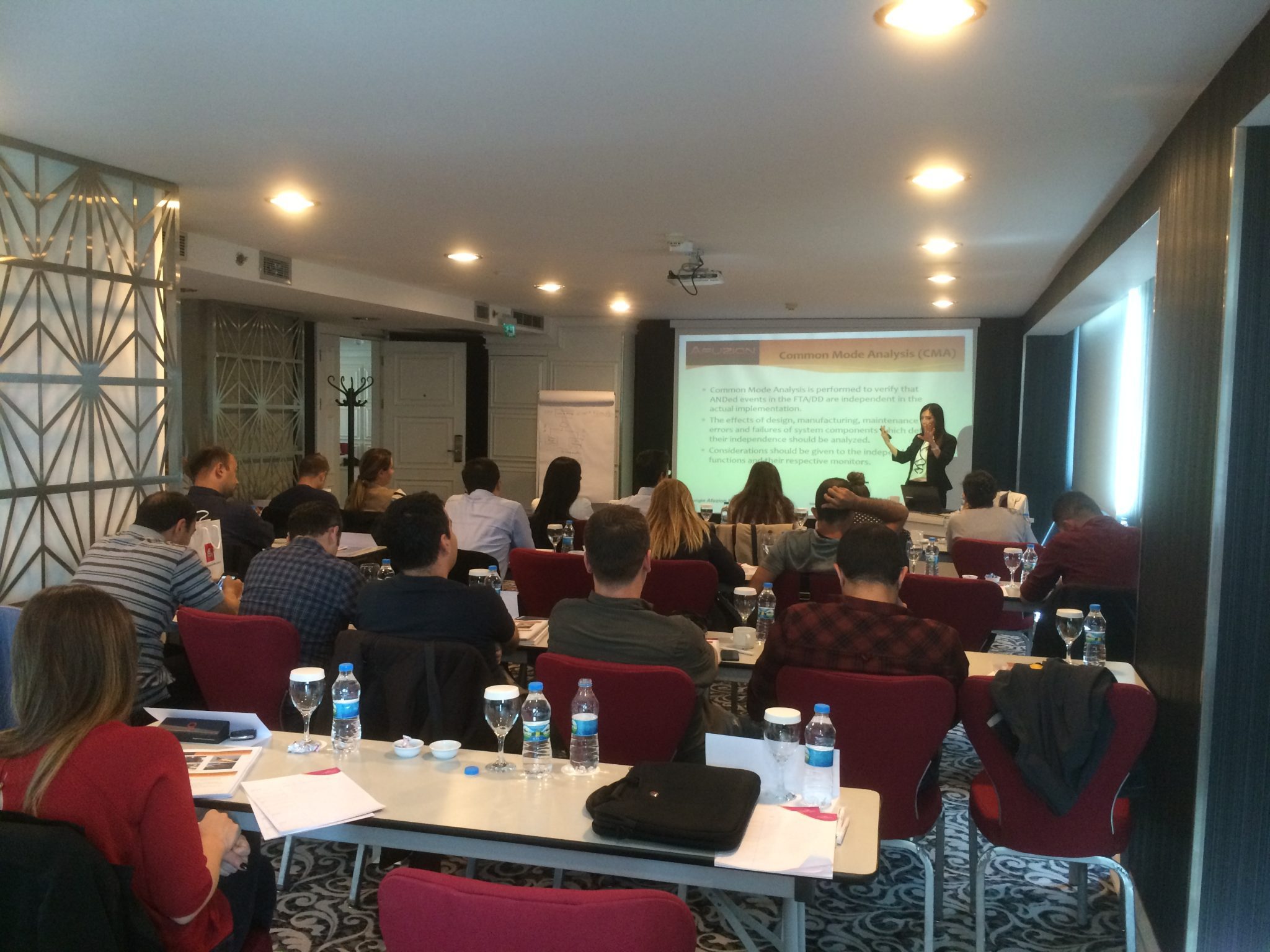For free training info, enter your contact info below and also receive the corresponding technical whitepaper; proprietary and only from AFuzion.

ARP4761A Training: Aircraft & System Safety Training
Over 41,000 Trained, 130 Classes yearly. World’s largest. Public, Private, Remote, or Onsite.
Course Schedules Here
SAE ARP4761 “Guidelines and Methods for Conducting the Safety Assessment Process on Civil Airborne Systems and Equipment” describes guidelines and methods for performing safety assessments associated with showing compliance with aeronautics and space certification requirements of 14CFR/CS 2X.1309 and 33.75. Safety assessments are an essential part of aircraft/system development process. This ARP represents industry best practice and is formally recognized by numerous National Airworthiness Authorities (NAAs), Military Airworthiness Authorities (MAAs), FAA and EASA. The safety assessment process is of fundamental importance in establishing appropriate safety objectives and requirements for the aircraft and its systems, and in determining that the designs satisfy these objectives and requirements.
SAE ARP4761 safety assessments are described as an integral process in ARP4754A “Guidelines for Development of Civil Aircraft and Systems”. There are fundamental relationships between safety assessments and the system development processes.
This training provides attendees with the knowledge to understand and apply the safety assessments techniques, as well as understanding the interaction between safety processes and the overall aircraft or system development processes.
Although ARP 4761’s context is commercial aircraft, its techniques are also applicable to safety assessment of ground or space vehicles.
AFuzion’s training has been provided to over 23,000 aviation engineers from 1,000 companies in 30 countries; more than all other trainers in the world combined. Brief summary below; contact us for more free information including a free technical ARP4761A Whitepaper, available on the Whitepapers page.
KEY FEATURES:
- In-Class walkthrough of Proprietary AFuzion ARP4761 and ARP4761A Checklists
- Functional Hazard Analysis on Aircraft and System level (FHA)
- Preliminary Aircraft and System Safety Analysis (PASA, PSSA)
- Failure Tree Analysis (FTA)
- Common Cause Analysis (CCA)
- Reliability Assessments
- Model-Based Safety Assessment (MBSA)
- Understanding & Applying the new ARP4761A
- Migrating from ARP4761 to ARP4761A
Main Section (2 days)
- Overview of the Relevant Regulatory Requirements (FAR/CS 2X §1309)
- Definitions of Key Safety-Related Terminology
- Probability Theory and Failure Types
- Interaction Between the Safety Assessment Processes (ARP4761) and the Aircraft/System Development Processes (ARP4754A)
- Functional Hazard Assessment (Aircraft/System Level FHA)
- Fault Tree Analysis (FTA) and Dependency Diagram (DD)
- Preliminary Aircraft and System Safety Assessment (PASA/PSSA)
- Development Assurance Level (DAL) Assignment Methodology
- Common Cause Analysis (CCA)
- Particular Risks Analysis (PRA),
- Zonal Safety Analysis (ZSA),
- Common Mode Analysis (CMA)
- Failure Modes & Effects Analysis and Summary (FMEA/FMES)
- Aircraft and System Safety Assessment (ASA/SSA)
- ARP4761 Best Practices & Common Mistakes
- Forthcoming ARP4761 Revision A Timeline & Synopsis
Workshop Section (1 day)
- Safety program planning – Identification of the assessment techniques, determining the common data to be used in safety assessments, etc.
- Function definition – Completeness of functions, and assurance that the functions are themselves safe when operating normally
- Assessment of functional failures related to defined function using AFHA/SFHA techniques
- Assessment of proposed architecture to determine that it may meet the safety requirements using PASA/PSSA techniques
- Assignment of function and item DAL in PASA/PSSA
- Evaluation of common modes and common causes
- Identifying safety requirements
- Verifying that implemented design meets the safety requirements using SSA/ASA techniques
- Showing compliance to the regulations
WHO:
Attendees may include systems or safety engineers, managers, software/hardware engineers, quality assurance or certification personnel; no prior expertise required.
To Request Training Info plus free samples, please submit the following (* = Required; request rejected if * not completed):
Request Free ARP4761A Training Info and Free Whitepaper
Information Request Form
Please provide the following information to receive your full Whitepaper



